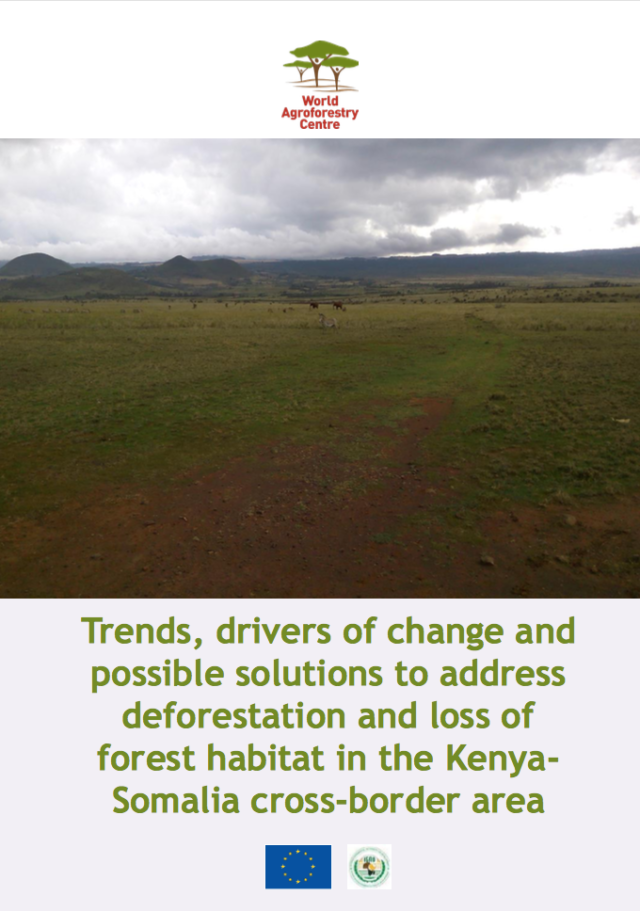The coastal forests of northeast coast of Kenya and southern Somalia form the northern tip of the East African Coastal Forest Biodiversity Hotspot. While this hotspot is considered threatened by deforestation and forest degradation, there is little up-to-date information on the status of these forests, their rates of deforestation and degradation, the underlying drivers of change and the opportunities presented by restoration of the degraded forest lands. The EU/IGAD-funded Biodiversity Management Programme, which supports one project that aims at the biodiversity conservation commissioned a study to describe the loss of tree cover, the associated drivers of change and reviewing possible solutions. This report first presents historic vegetation maps that localize the lowland tropical rainforests and the drylands forests that are the habitats of the biodiversity of the East African Coastal Forest Biodiversity Hotspot. Next, using information from Global Forest Watch (GFW), this study reports significant deforestation in the lowland tropical rainforests in southern and central Lamu County and adjacent Tana River County. We further report isolated deforestation in the dryland forests in the Awer Conservancy in the northern part of Lamu County. The GFW data reveals only limited deforestation in the south of Somalia. The Fire Information Resource Management System (FIRMS) active fire data reveals frequent fires in the lowland savannas surrounding the remaining tropical rainforest fragments. More isolated areas affected by fires are reported from the dryland forests in South Somalia, presumably reflecting the active charcoal industry in this area. Our analysis thus reveals that few fragments of indigenous lowland tropical rainforest remain in Lamu and Tana River Counties, while charcoal production is affecting the dryland forests in southern Somalia and the drier areas across the border in Kenya.
Año de publicación
2018
Autores
Koech, G.; Wanjara, J.; Kihungi, L.; Okoth, S.; Ahmed, M.; Muriithi, W.; Nyongesa, J.; Maimbo, M.M.
Idioma
English
Palabras clave
deforestation, degradation, logging, law enforcement, policy, timber trade, illegal logging
Geográfico
Kenya, Somalia


















